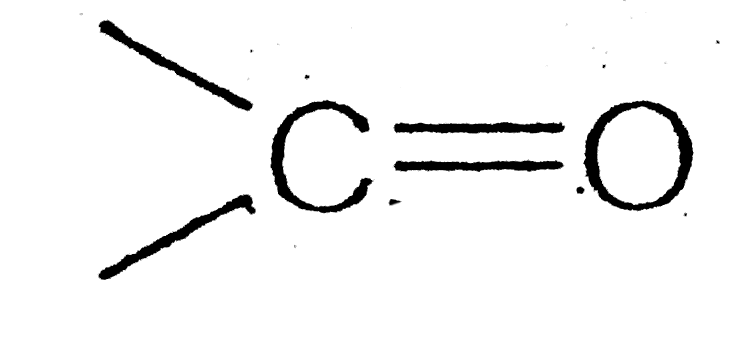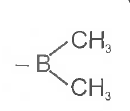Maximum -I effect is exerted by the group
−C6H5
−OCH3
−Cl
−NO2
The correct Answer is:D
To determine which group exerts the maximum -I (negative inductive) effect, we need to analyze the electronegativity of different groups and their ability to withdraw electron density from a carbon chain. Here’s a step-by-step solution:
Step 1: Understand the -I Effect
The -I effect refers to the electron-withdrawing ability of a substituent attached to a carbon chain. Electronegative atoms or groups pull electron density towards themselves, creating a polarization in the sigma bond.
Hint: Remember that the -I effect is stronger for more electronegative atoms.
Step 2: Identify the Groups Given
The groups mentioned in the question are:
- Phenyl group (C6H5)
- Methoxy group (OCH3)
- Chlorine (Cl)
- Nitro group (NO2)
Hint: List the groups and their electronegativities to compare their -I effects.
Step 3: Analyze the Electronegativity of Each Group
- Nitro group (NO2): Contains nitrogen, which is highly electronegative and has a strong -I effect.
- Chlorine (Cl): Also electronegative, but less than nitrogen in the nitro group.
- Methoxy group (OCH3): The oxygen is electronegative, but the methoxy group has a +R effect (resonance effect) which can counteract its -I effect.
- Phenyl group (C6H5): Has a weak -I effect due to resonance stabilization.
Hint: Compare the electronegativities of nitrogen, chlorine, oxygen, and carbon to determine the strongest -I effect.
Step 4: Order the Groups Based on Their -I Effect
Based on the electronegativities and the nature of the groups, we can rank them:
1. Nitro group (NO2) - Maximum -I effect
2. Chlorine (Cl) - Moderate -I effect
3. Methoxy group (OCH3) - Weak -I effect due to +R effect
4. Phenyl group (C6H5) - Least -I effect
Hint: Use the electronegativity values to justify the order.
Step 5: Conclusion
The group that exerts the maximum -I effect is the Nitro group (NO2).
Final Answer: D) Nitro group (NO2)
The -I effect refers to the electron-withdrawing ability of a substituent attached to a carbon chain. Electronegative atoms or groups pull electron density towards themselves, creating a polarization in the sigma bond.
The groups mentioned in the question are:
- Phenyl group (C6H5)
- Methoxy group (OCH3)
- Chlorine (Cl)
- Nitro group (NO2)
- Nitro group (NO2): Contains nitrogen, which is highly electronegative and has a strong -I effect.
- Chlorine (Cl): Also electronegative, but less than nitrogen in the nitro group.
- Methoxy group (OCH3): The oxygen is electronegative, but the methoxy group has a +R effect (resonance effect) which can counteract its -I effect.
- Phenyl group (C6H5): Has a weak -I effect due to resonance stabilization.
Based on the electronegativities and the nature of the groups, we can rank them:
1. Nitro group (NO2) - Maximum -I effect
2. Chlorine (Cl) - Moderate -I effect
3. Methoxy group (OCH3) - Weak -I effect due to +R effect
4. Phenyl group (C6H5) - Least -I effect
The group that exerts the maximum -I effect is the Nitro group (NO2).
Topper's Solved these Questions
- BOOK - NCERT FINGERTPS ENGLISHCHAPTER - ORGANIC CHEMISTRY-SOME BASIC PRINCIPLES AND TECHNIQUES EXERCISE - Exemplar Problems12videos
ORGANIC CHEMISTRY-SOME BASIC PRINCIPLES AND TECHNIQUES
- BOOK - NCERT FINGERTPS ENGLISHCHAPTER - ORGANIC CHEMISTRY-SOME BASIC PRINCIPLES AND TECHNIQUES EXERCISE - Assertion & Reason13videos
ORGANIC CHEMISTRY-SOME BASIC PRINCIPLES AND TECHNIQUES
- BOOK - NCERT FINGERTPS ENGLISHCHAPTER - HYDROGEN EXERCISE - Assertion And Reason15videos
HYDROGEN
- BOOK - NCERT FINGERTPS ENGLISHCHAPTER - PRACTICE PAPER 1EXERCISE - Practice Paper 144videos
PRACTICE PAPER 1
Similar Questions
Why is the hyperconjugation effect exerted by a methyl group greater than that exerted by an ethyl group?
View Solution+I effect is shown by:
View SolutionAssertion : When we jump from height then maximum possibilities to get hurt is at foot.
Reason : Maximum force is exerted on foot.View SolutionStatement-1:Ortho iodobenzoic acid is strongest acid among all ortho halobenzoic acids.
Statement-2: Iodine exerts maximum ortho effect (steric effect ) so the acid weakening resonance effect of aromatic ring is decreased.View SolutionWhich factors will increase the reactivity of
 group?
group?
(i) Presence of a group with positive inductive effect.
(ii) Presence of a group with (-ve) inductive effect
(iii) Presence of large alkyl group.View Solution1∘ alkyl groups cause greater + l-effect as compared to 2∘ alkyl groups. True/False.
View SolutionAssertion : N, N-Diethyl ethanamine is more basic the N, N-Dimethyl methanamine.
Reason : +I effect of ethyl group is more then methylView SolutionIllustrate inert pair-effect with reference to the chemistry of group 14 elements.
View SolutionAssertion : Phenol is a weak acid than ethanol.
Reason : Groups with +M effect and -I effect decrease acidity at m-position .View SolutionThe mesomeric effects of the groups
 ,
,
respectively isView Solution

